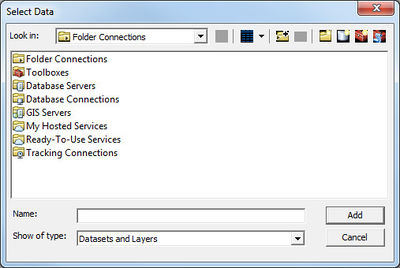GMS:Add Data: Difference between revisions
From XMS Wiki
Jump to navigationJump to search
| Line 6: | Line 6: | ||
The '''''Data | Add Data''''' command is available when ArcObjects is enabled and uses the same dialog resource to open GIS data layers that is used by ArcView. | The '''''Data | Add Data''''' command is available when ArcObjects is enabled and uses the same dialog resource to open GIS data layers that is used by ArcView. | ||
[[ | [[File:Add Data Dialog.jpg|thumb|none|left|400 px|''Select Data'' dialog]] | ||
When ArcObjects is enabled you are able to load any of the ESRI supported formats, including shapefiles, coverages, geodatabases, grids, images, CAD files and others, as GIS data layers in GMS. These data can then be converted to GMS feature objects in map coverages. | When ArcObjects is enabled you are able to load any of the ESRI supported formats, including shapefiles, coverages, geodatabases, grids, images, CAD files and others, as GIS data layers in GMS. These data can then be converted to GMS feature objects in map coverages. | ||
